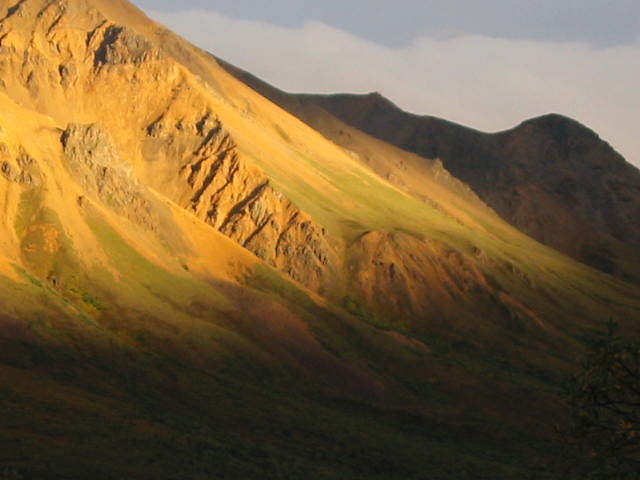Living at latitude 63° north, we observe wide swings in the amount of light and dark in the days; more darkness in the winter, more light in the summer. Denali National Park is south of the Arctic Circle, which is at 66.7° north, so technically the sun rises and sets—i.e. goes above and below the horizon—each and every day in our part of Alaska. However, because we live in the mountains, the ridges and ranges surrounding us often obscure when and where the sun rises and sets.
At the winter solstice, the sun is technically above the southern horizon for a mere two hours, creating four hours of visible light. At the summer solstice the sun dips below the northern horizon for two hours, creating twenty-four hours of visible light. The effect of these extremes on my mood or circadian rhythms is slight. We are either gaining or losing mere seconds of light each day. Neither extreme changes my work schedule or indoor activities. During the months before and after the solstices I either awake in the dark and go to sleep in the dark, or I awake in the light and go to sleep in the light. There is a pleasant sense of stability in this pattern. My life feels calm and balanced.
Since I do not suffer form seasonal affective disorder, the 20 hours of darkness has little effect on my emotions. I find myself happily skiing, skijoring, and mushing with a headlamp on my head and an extra one in my pack. The darkness, the stars, or upon occasion the northern lights are all welcome visitors to my outdoor pursuits. Also, I find the cold, dark times very conducive to introspection, which my busy summer life precludes.
The balance and calm I experience around the solstices is upset during the months around the equinoxes, vernal in March and autumnal in September. At these times we are gaining or losing up to seven minutes of daylight each day! This means that on Monday I can awaken with sunrise at 6:30 am, but on the following Monday, a mere week later, I awaken at the same 6:30 time in almost full daylight or almost full darkness. Losing seven minutes a day for seven days—that’s a change of 49 minutes in one week. My body and circadian rhythms get all out of whack, and neither stability nor calm seep into my cells during months before and after the equinoxes.
Contrary to what many of my Lower 48 acquaintances may think, the darkest month is not the most difficult time of year. For me, the most grating times are those twice yearly periods of rapid change, when it seems all the world is in flux and no new day is like the previous.
Denali Dispatch
Denali Dispatch is a journal of the goings on at Camp Denali.




